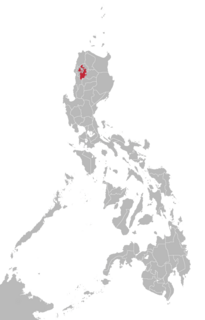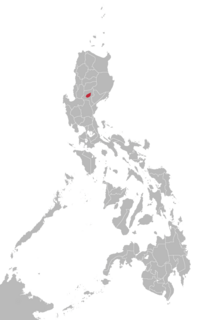Related Research Articles
Most languages of Europe belong to the Indo-European language family. Out of a total European population of 744 million as of 2018, some 94% are native speakers of an Indo-European language. Within Indo-European, the three largest phyla are Romance, Germanic, and Slavic, they have more than 200 million speakers each and together account for close to 90% of Europeans. Smaller phyla of Indo-European found in Europe include Hellenic, Baltic, Albanian, Celtic, Armenian and Indo-Aryan.
Ethnologue: Languages of the World is an annual reference publication in print and online that provides statistics and other information on the living languages of the world. It was first issued in 1951, and is now published annually by SIL International, a U.S.-based, worldwide, Christian non-profit organization. SIL's main purpose is to study, develop and document languages for religious purposes and to promote literacy.
GRS may refer to:

Kalinga is a dialect continuum of Kalinga Province in the Philippines, spoken by the Kalinga people, alongside Ilocano. The Banao Itneg variety is not one of the neighboring Itneg languages.

Bontoc (Bontok) is the native language of the indigenous Bontoc people of the Mountain Province, in the northern part of the Philippines.
The Nimboran languages are a small family of Papuan languages, spoken in the Grime River watershed, that had been part of Stephen Wurm's Trans–New Guinea proposal. However, when proto-Nimboran pronouns are reconstructed (*genam "I" and kom or komot "thou"), they have little resemblance to the proto-TNG pronouns *na and *ga. Usher places them in a North Papuan stock that resembles Cowan's proposal.

Kawaimina is a syllabic abbreviation used to refer to four languages or dialects of East Timor:

Cameroon is home to at least 250 languages. However, some accounts report around 600 languages. These include 55 Afro-Asiatic languages, two Nilo-Saharan languages, four Ubangian languages, and 169 Niger–Congo languages. This latter group comprises one Senegambian language (Fulfulde), 28 Adamawa languages, and 142 Benue–Congo languages . French and English are official languages, a heritage of Cameroon's colonial past as a colony of both France and the United Kingdom from 1916 to 1961. Eight out of the ten regions of Cameroon are primarily francophone, representing 83% of the country's population, and two are anglophone, representing 17%. The anglophone proportion of the country is in constant regression, having decreased from 21% in 1976 to 20% in 1987 and to 17% in 2005, and is estimated at 16% in 2015.
Mumeng is a dialect chain of the Austronesian family in Morobe Province, Papua New Guinea. Dambi–Kumalu and Patep–Zenag–Gorakor have a degree of mutual intelligibility. Kapin may belong as well.
Lamaholot, also known as Solor or Solorese, is a Central Malayo-Polynesian dialect cluster of Flores, Indonesia. The varieties may not be all mutually intelligible; Keraf (1978) reports that there are 18 languages under the name.

Itneg is a South-Central Cordilleran dialect continuum found in the island of Luzon, Philippines. This language and Ilocano are spoken by the Itneg people in Abra.
Spurious languages are languages that have been reported as existing in reputable works, while other research has reported that the language in question did not exist. Some spurious languages have been proven to not exist. Others have very little evidence supporting their existence, and have been dismissed in later scholarship. Others still are of uncertain existence due to limited research.
West Arawe is an Austronesian dialect chain of West New Britain, Papua New Guinea. The principal varieties are Apalik, Gimi, Aiklep, and Arawe proper (Solong).
Kimaragang (Marigang), Tobilung, and Rungus are varieties of a single Austronesian language of Sabah, Malaysia. The three varieties share moderate mutual intelligibility. Children are not learning it well in some areas.
Atta is an Austronesian dialect cluster spoken by the Aeta (Agta) Negritos of the northern Philippines.

Isinai is a Northern Luzon language primarily spoken in Nueva Vizcaya province in the northern Philippines. By linguistic classification, it is more divergent from other Central Cordilleran languages, such as Kalinga, Itneg or Ifugao and Kankanaey.
Masela (Marsela) is the language of Marsela Island in southern Maluku, Indonesia. Regional varieties are distinct; Ethnologue counts it as three languages.
The Albania Billie Jean King Cup team represents Albania in Billie Jean King Cup tennis competition and are governed by the Albanian Tennis Federation. They currently compete in the Europe/Africa Zone of Group III.
References
- ↑ Gresi at Ethnologue (18th ed., 2015) (subscription required)